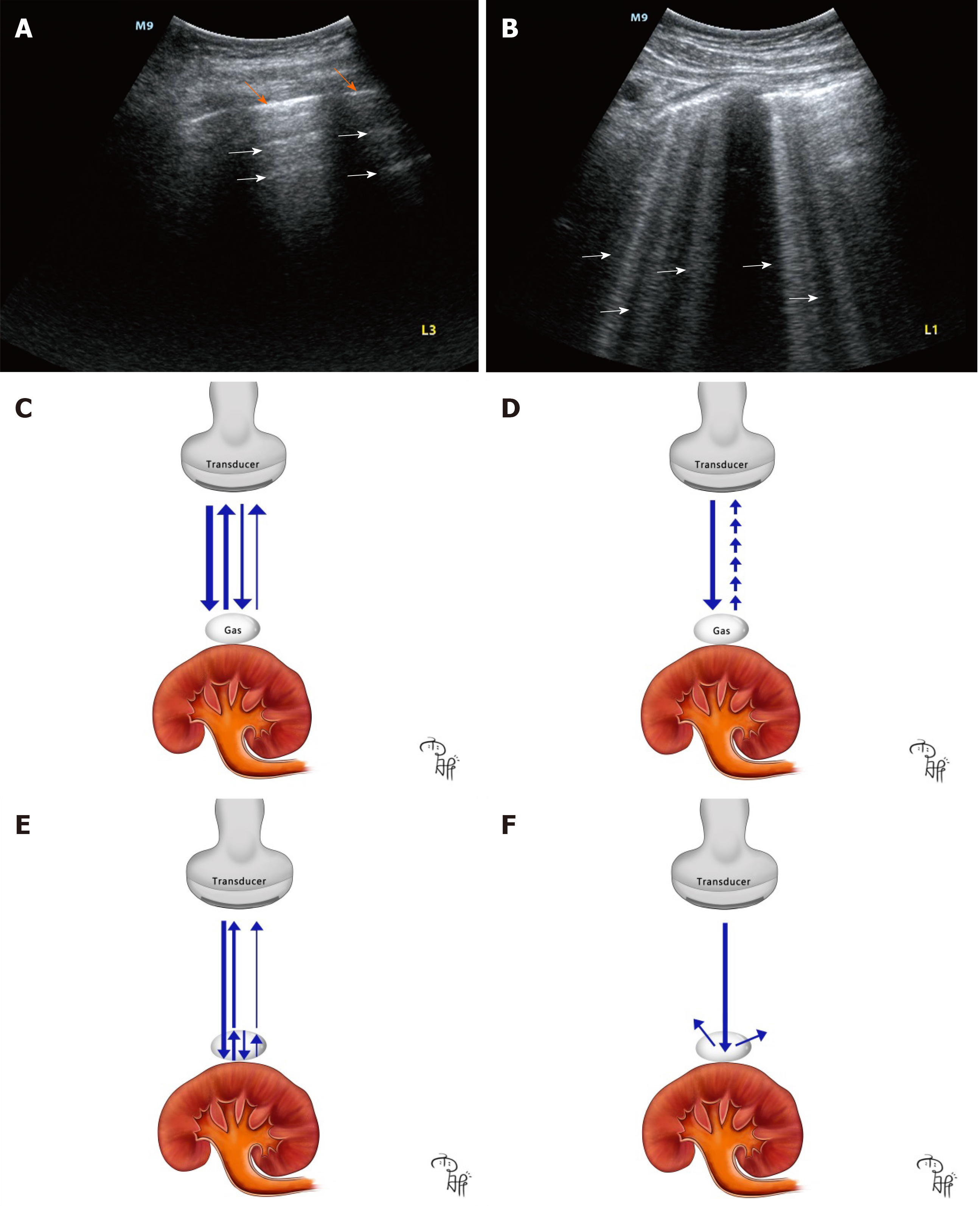Copyright
©The Author(s) 2021.
World J Clin Cases. Apr 16, 2021; 9(11): 2584-2594
Published online Apr 16, 2021. doi: 10.12998/wjcc.v9.i11.2584
Published online Apr 16, 2021. doi: 10.12998/wjcc.v9.i11.2584
Figure 4 A-lines and B-lines in pulmonary ultrasound in our clinical practice and cartoon illustrating how different air-related artifacts in emphysematous pyelonephritis are produced.
A: Point-of-care ultrasound (POCUS) of a healthy lung showing gradually diminished A-lines (the white arrows) and pleura lines (the orange arrows), and the equidistance between the lines; B: POCUS of lung edema showing B-lines (the white arrows); C: Cartoon showing how A-lines are produced. The ultrasound beams (the blue arrows) are repetitively reflecting between gas and the transducer with strength degradation; D: Cartoon showing how B-lines are produced. The ultrasound beam (the blue arrow) provokes resonance in the gas-fluid interface, emitting continuous waves back to the transducer (the small blue arrows); E: Cartoon showing how comet-tail artifacts are produced. The ultrasound beam is repetitively reflecting between the shallow and deep sides (the blue arrows) of gas bubbles with gradually diminished ultrasound beams returning to the transducer; F: Cartoon showing how dirty shadowing is produced. The ultrasound beam is reflecting in multiple directions (the blue arrows) deep into the gas.
- Citation: Xing ZX, Yang H, Zhang W, Wang Y, Wang CS, Chen T, Chen HJ. Point-of-care ultrasound for the early diagnosis of emphysematous pyelonephritis: A case report and literature review . World J Clin Cases 2021; 9(11): 2584-2594
- URL: https://www.wjgnet.com/2307-8960/full/v9/i11/2584.htm
- DOI: https://dx.doi.org/10.12998/wjcc.v9.i11.2584









